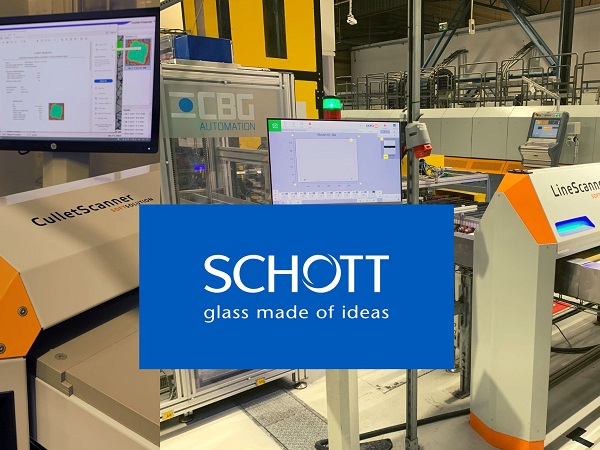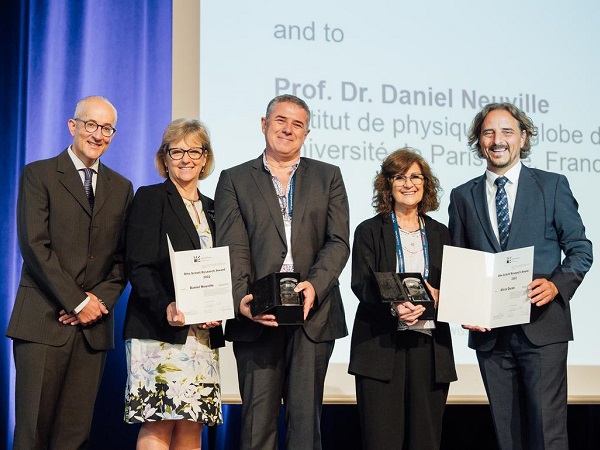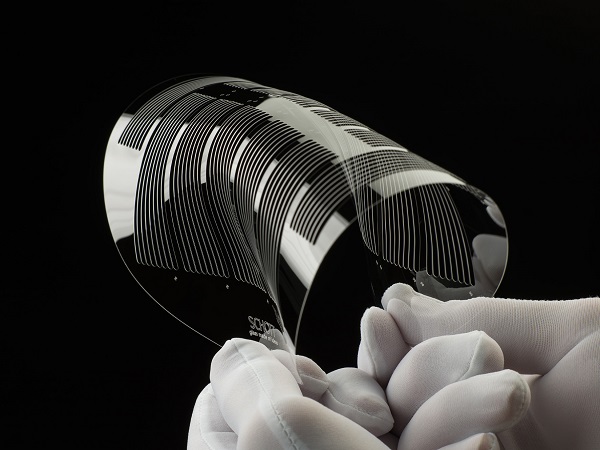Date: 10 November 2007
Hobby photographers are familiar with how tricky correct illumination can be. Dull contrasts and fuzzy contours can kill even the most beautiful photograph. However, the consequences for industrial image processing weigh much heavier. If visual quality assurance breaks down, this can result in costly consequences. The objective of industrial image processing is to use appropriate lighting systems to contrast the products that need to be inspected, so that all of the relevant details and deviations can be detected by the camera. SCHOTT ranks among the global leaders in technology when it comes to this highly specialized market. Electronics manufacturers, the pharmaceutical industry and subcontractors to the automotive industry all rely on lighting systems from SCHOTT. ”This is a very attractive market with annual growth rates of around 25 percent. The worldwide sales volume for this type of lighting technology alone reached 320 million euros in 2005,” explains Jürgen Schumann, head of the industrial product group at SCHOTT Fiber Optics.
Illumination technologies  In order to fully meet custom-designed demands for illumination, various illumination techniques are used, including reflected, transmitted, bright field and dark field lighting. Reflected illumination uses a spotlight to help reveal corrosion on metal more easily. Here, both the camera and the lighting are positioned on the same side of the object. The transmitted lighting technique works differently. The object is placed between the camera and the light in order to show the internal structures. If the object is located inside the bright area, it is illuminated slightly from the side from the direction that the camera is in. This casts shadows onto structures that increase the contrast. Last, but not least, illumination from the dark field takes place at an extremely flat angle. Surface structures reflect the incident light in the direction of the cameras and appear bright. This allows for scratches to be detected.
In order to fully meet custom-designed demands for illumination, various illumination techniques are used, including reflected, transmitted, bright field and dark field lighting. Reflected illumination uses a spotlight to help reveal corrosion on metal more easily. Here, both the camera and the lighting are positioned on the same side of the object. The transmitted lighting technique works differently. The object is placed between the camera and the light in order to show the internal structures. If the object is located inside the bright area, it is illuminated slightly from the side from the direction that the camera is in. This casts shadows onto structures that increase the contrast. Last, but not least, illumination from the dark field takes place at an extremely flat angle. Surface structures reflect the incident light in the direction of the cameras and appear bright. This allows for scratches to be detected.
What light is the right light?
For the most part, the type of lighting is determined by the characteristics of the material that objects are made of and the lighting technique that is used. Here, factors, such as light delivery to the object and light intensity are crucial. Generally speaking, the higher the level of brightness, the quicker the inspection cycles. This increases throughput and reduces the costs per unit.
With lesser demands on lighting, even simple halogen spotlights, light bulbs or LED arrays without electronic excitation often suffice. These light sources are inexpensive and allow for a uniform illumination.
Fluorescent tubes provide diffuse light. The advantages of fluorescent lighting lie in their high life spans of around 15,000 hours and their relatively low initial cost. Fluorescent tubes can be used wherever no special requirements apply to the variability of the lighting. If faster inspection speeds or more complex inspections are required, fiber-optic systems or high quality LED systems are recommended. Fiber optics is known for its particularly high light intensity, flexible component shapes and uniform lighting.
New trend led  As in general lighting, change is on the horizon for industrial image processing. LEDs (light emitting diodes) will soon be stealing the stage from other types of systems. ”In around four years, three-quarters of all industrial image processing applications will be based on LED technology,” explains Jürgen Schumann. This technology offers advantages over other types of lighting. For example, LEDs offer much longer life spans of approximately 50,000 hours, do not require an external light source or fiber-optic light conductors and can be easily controlled electronically. Furthermore, they produce a narrowband light spectrum with a tight wavelength region that can be modified to meet the exact sensitivity of the CCD chips (charge coupled device) contained in the camera. ”In digital cameras, CCD chips serve as a recording medium. A perfectly aligned light spectrum delivers the best possible results,” explains Karen Holst, application and product manager at SCHOTT and co-author of the German textbook »Einführung in die industrielle Bildverarbeitung«, recently published by Franzis Verlag in Germany. Nevertheless, LED lighting still has technological deficits. For example, heat drastically shortens the life spans of LEDs. Therefore, managing temperatures calls for additional development work. Furthermore, the light output is often much lower than that of a fiber-optic solution.
As in general lighting, change is on the horizon for industrial image processing. LEDs (light emitting diodes) will soon be stealing the stage from other types of systems. ”In around four years, three-quarters of all industrial image processing applications will be based on LED technology,” explains Jürgen Schumann. This technology offers advantages over other types of lighting. For example, LEDs offer much longer life spans of approximately 50,000 hours, do not require an external light source or fiber-optic light conductors and can be easily controlled electronically. Furthermore, they produce a narrowband light spectrum with a tight wavelength region that can be modified to meet the exact sensitivity of the CCD chips (charge coupled device) contained in the camera. ”In digital cameras, CCD chips serve as a recording medium. A perfectly aligned light spectrum delivers the best possible results,” explains Karen Holst, application and product manager at SCHOTT and co-author of the German textbook »Einführung in die industrielle Bildverarbeitung«, recently published by Franzis Verlag in Germany. Nevertheless, LED lighting still has technological deficits. For example, heat drastically shortens the life spans of LEDs. Therefore, managing temperatures calls for additional development work. Furthermore, the light output is often much lower than that of a fiber-optic solution.
A development team at SCHOTT in Mainz is now working to resolve these issues and Jürgen Schumann is optimistic. ”We are confident that we will be successful in getting these technological challenges under control quite soon. After all, we remain committed to retaining our leadership role in this market,” he concludes.







Add new comment